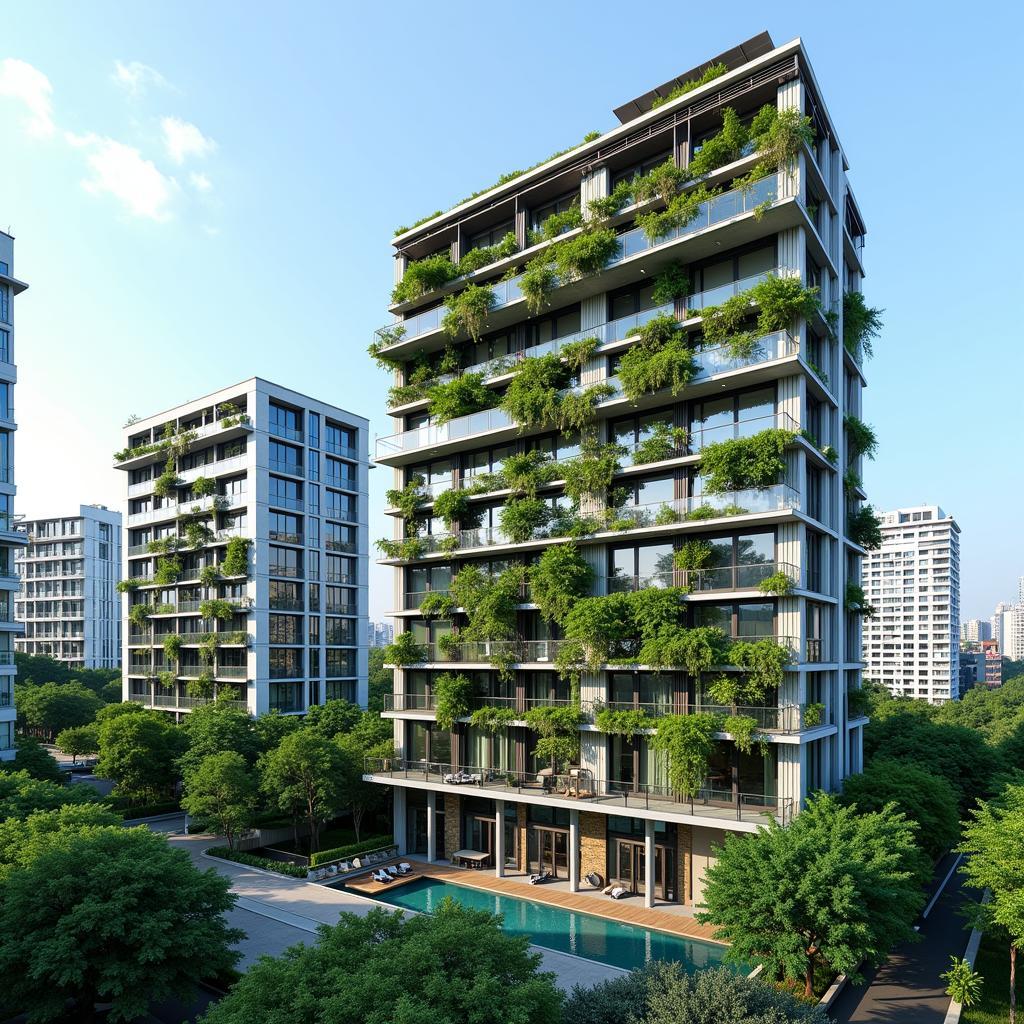The Asean Architects Council, often referred to as the ACA, plays a pivotal role in shaping the architectural landscape of Southeast Asia. This regional body serves as a platform for collaboration, knowledge sharing, and advocacy, uniting architectural professionals across the ten member states.
The Role of the ASEAN Architects Council
The ACA’s mission extends beyond simply promoting architectural excellence. It actively works towards:
- Harmonizing architectural standards: The council strives to bridge gaps in educational qualifications and professional practice standards across ASEAN countries. This includes initiatives like the ASEAN Architect program, aiming to facilitate the mobility of architects within the region.
- Facilitating cross-border collaborations: The ACA encourages partnerships between architectural firms and professionals from different ASEAN nations. Such collaborations foster knowledge exchange, promote regional identity in design, and contribute to the growth of the architectural industry as a whole.
- Addressing regional challenges: Climate change, rapid urbanization, and cultural preservation are just a few of the pressing issues facing Southeast Asia. The ACA encourages architects to address these challenges through innovative and sustainable design solutions.
 ASEAN Architects Meeting
ASEAN Architects Meeting
Key Initiatives of the ACA
The ASEAN Architects Council undertakes various initiatives to achieve its objectives. Some notable ones include:
- ASEAN Architect Registration: This program aims to establish a mutually recognized qualification for architects within ASEAN. This will enable professionals to practice more easily across borders, facilitating knowledge transfer and fostering a more integrated architectural community. You can learn more about the process and requirements in our dedicated article about ASEAN architects registration.
- Architectural Competitions and Exhibitions: The ACA regularly organizes design competitions focused on addressing regional challenges and showcasing the talent of ASEAN architects. These events also serve as platforms for networking and knowledge sharing.
- Continuing Professional Development (CPD) Programs: The ACA promotes lifelong learning for architects through workshops, seminars, and conferences. These programs focus on emerging trends, technologies, and best practices within the field.
The Impact of the ASEAN Architects Council
The ACA’s work has significantly impacted the architectural landscape of Southeast Asia. Some key achievements include:
- Increased awareness of regional identity in architecture: The council has fostered a sense of shared architectural heritage among ASEAN nations, leading to a more conscious effort to incorporate local contexts and traditions in contemporary design.
- Enhanced professional standards: Through its harmonization initiatives, the ACA has contributed to raising the overall standard of architectural practice within the region. This, in turn, benefits the built environment and the communities it serves.
- Greater recognition for ASEAN architects on the global stage: The ACA actively promotes the work of Southeast Asian architects internationally. This has led to increased recognition and opportunities for ASEAN architects to contribute to global architectural discourse.
 Sustainable ASEAN Architecture
Sustainable ASEAN Architecture
Looking Ahead: The Future of Architecture in ASEAN
The ASEAN region is undergoing rapid development and transformation. This presents both challenges and opportunities for the architectural profession. The ACA recognizes the need to adapt and evolve to remain relevant in this dynamic landscape.
Key areas of focus for the future include:
- Promoting sustainable and resilient design: As climate change intensifies, architects have a crucial role to play in creating buildings and cities that are environmentally responsible and resilient to natural disasters.
- Harnessing technology in architectural practice: From Building Information Modeling (BIM) to virtual reality and artificial intelligence, technology is rapidly transforming the way buildings are designed and constructed. The ACA encourages architects to embrace these advancements to enhance efficiency, sustainability, and creativity.
- Nurturing the next generation of ASEAN architects: The ACA is committed to supporting the development of young architects and equipping them with the skills and knowledge necessary to thrive in the evolving architectural landscape.
The ASEAN Architects Council acts as a driving force for progress and innovation within the architectural profession in Southeast Asia. By fostering collaboration, raising professional standards, and addressing regional challenges, the ACA is helping to shape a bright future for architecture in ASEAN.
For those interested in understanding the broader context of architectural collaboration within the Asia-Pacific region, our article on ASEAN and APEC architects provides valuable insights.
FAQ
1. How can I become a member of the ASEAN Architects Council?
Membership to the ACA is typically through the national architectural professional body of each ASEAN member state. You can find more information on the specific requirements by contacting your local architectural association.
2. Does the ACA offer scholarships for architectural students?
While the ACA itself doesn’t directly offer scholarships, they often promote scholarship opportunities offered by other organizations within their network. It’s best to check their official website and social media channels for updates.
3. What are the benefits of having an ASEAN Architect registration?
The ASEAN Architect registration aims to make it easier for architects to practice across borders within ASEAN. It enhances professional recognition and facilitates knowledge exchange within the region.
4. How does the ACA promote sustainable architectural practices?
The ACA organizes conferences, workshops, and publishes resources focused on sustainable design principles. They also recognize and promote projects that exemplify environmentally responsible practices.
5. Can foreign architects practice in ASEAN countries?
Regulations for foreign architects vary across ASEAN countries. It’s crucial to consult the specific guidelines and requirements of the country you’re interested in practicing in. The ACA can also be a valuable resource for information on this topic.
Need help? Contact us!
Phone Number: 0369020373
Email: [email protected]
Address: Thon Ngoc Lien, Hiep Hoa, Bac Giang, Vietnam
Our customer support team is available 24/7.

